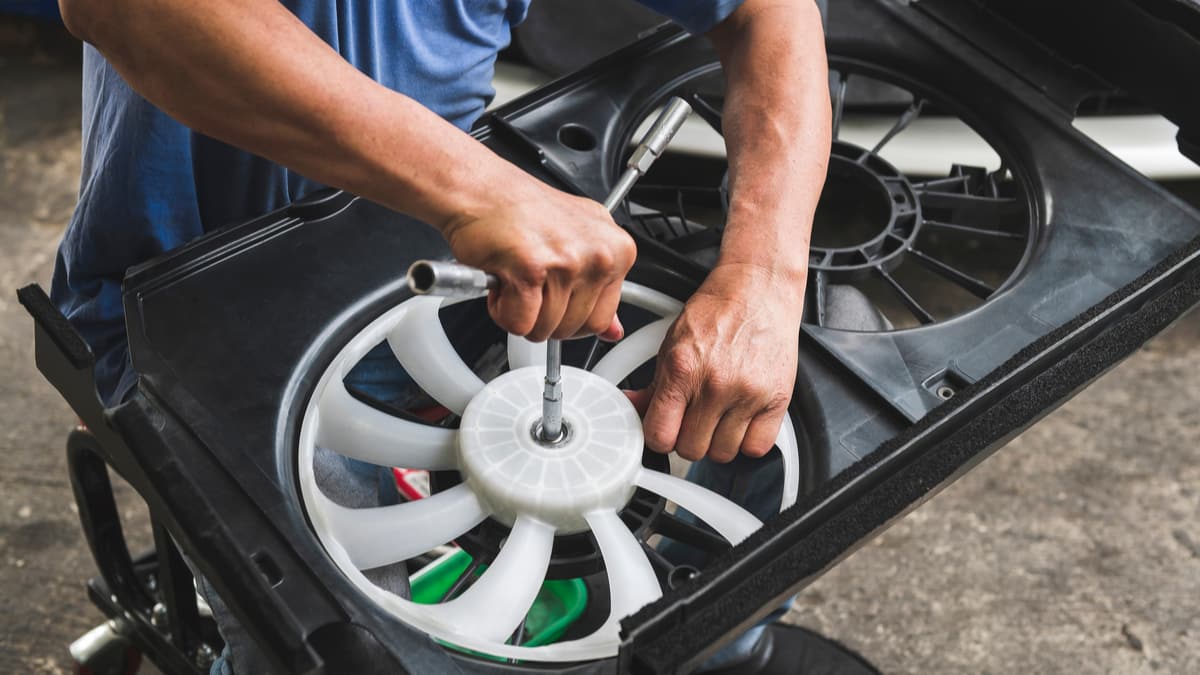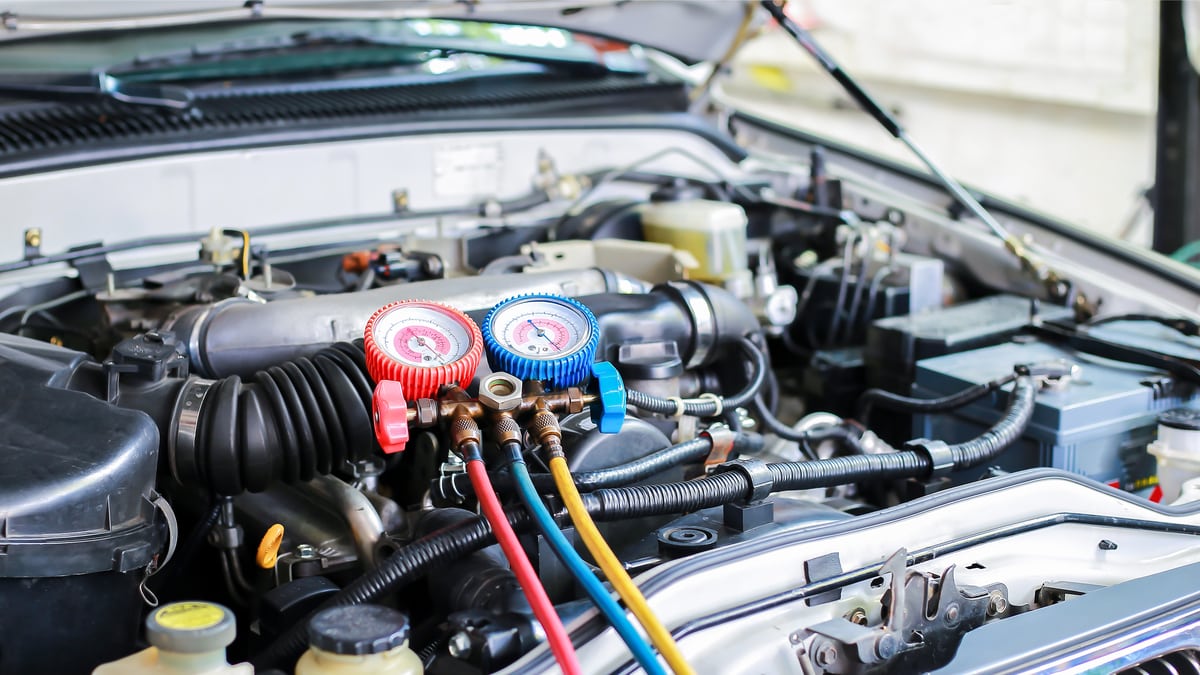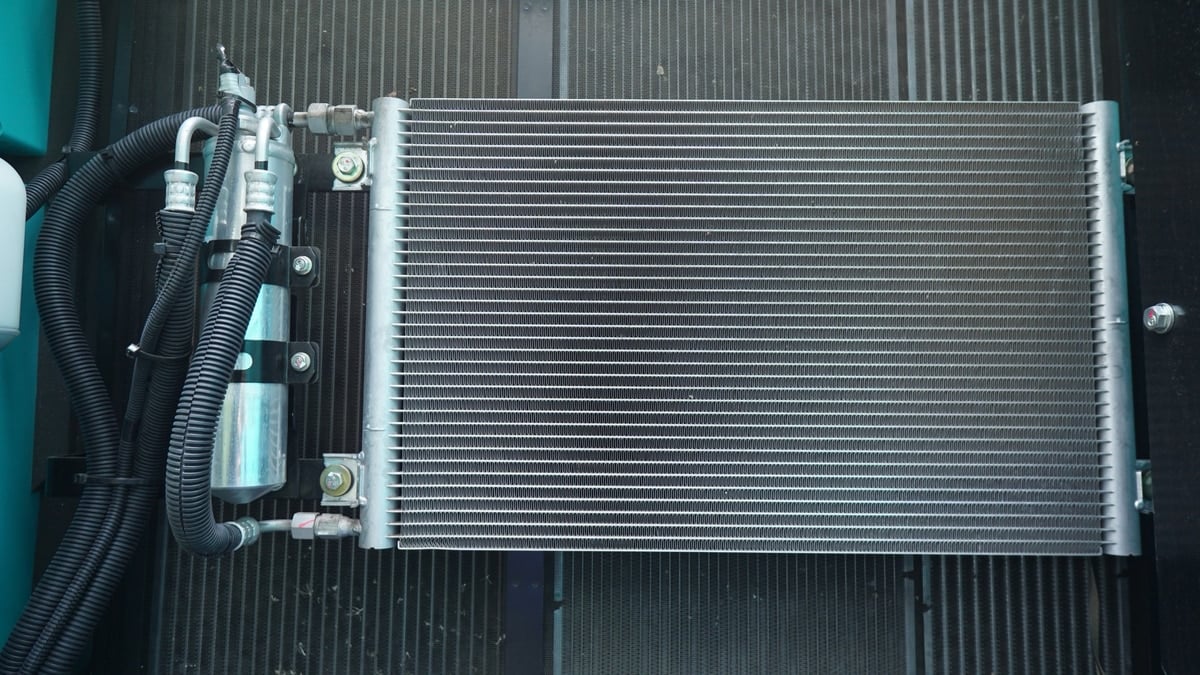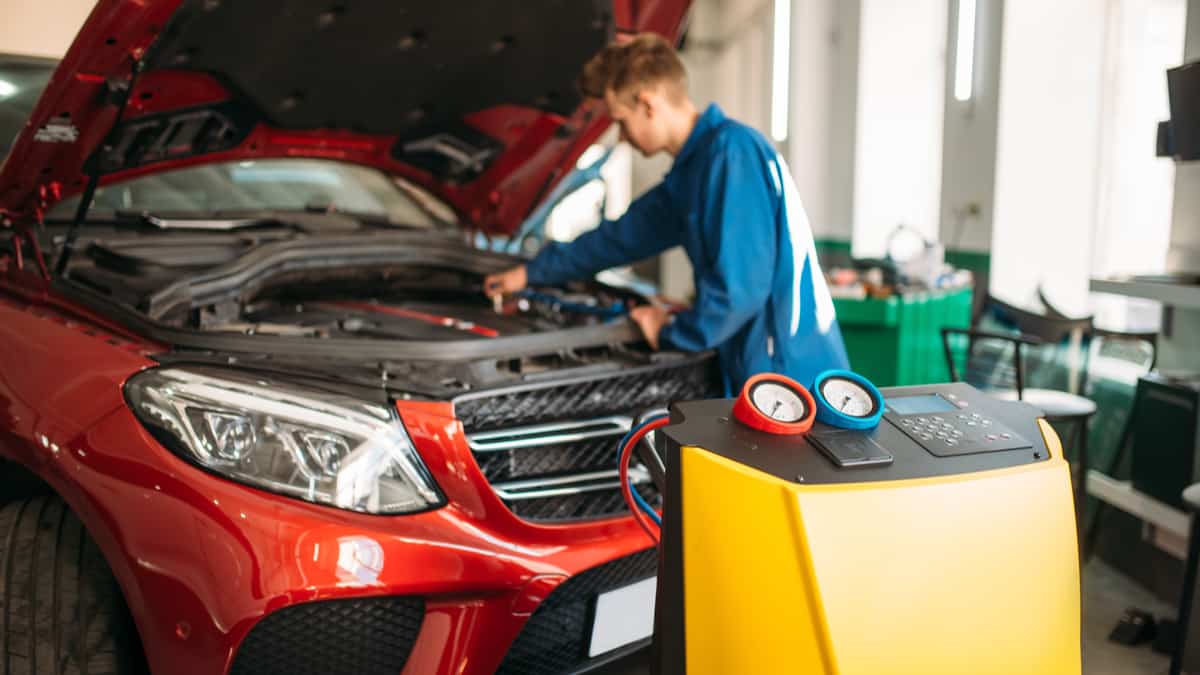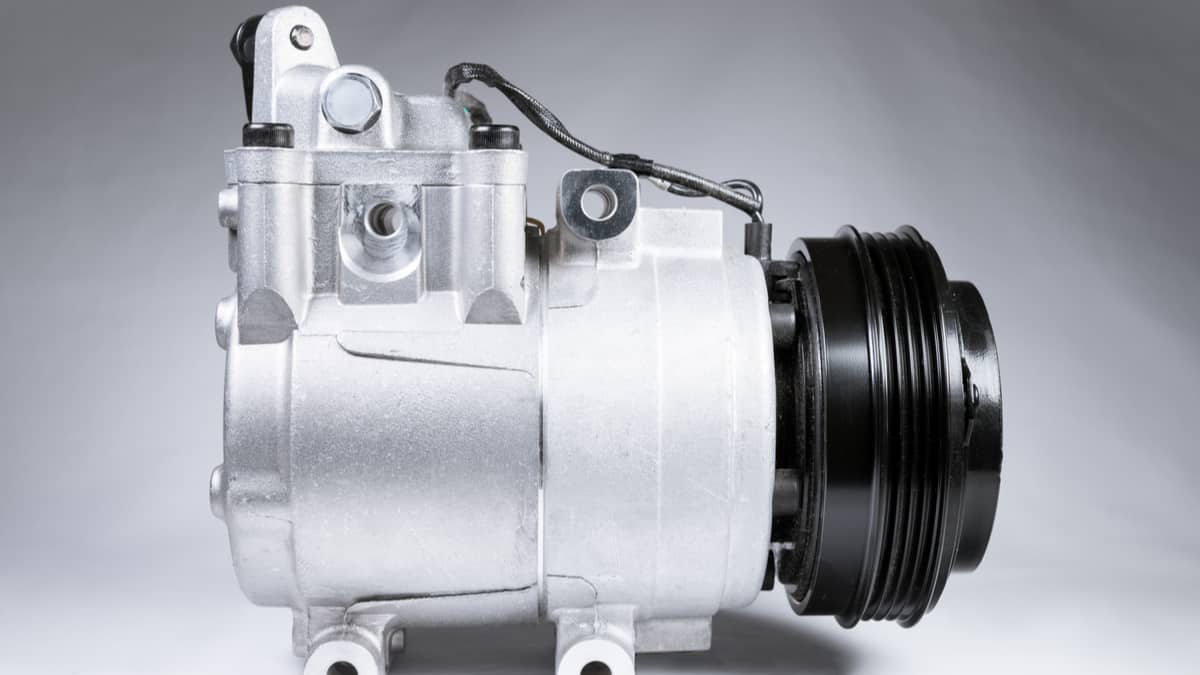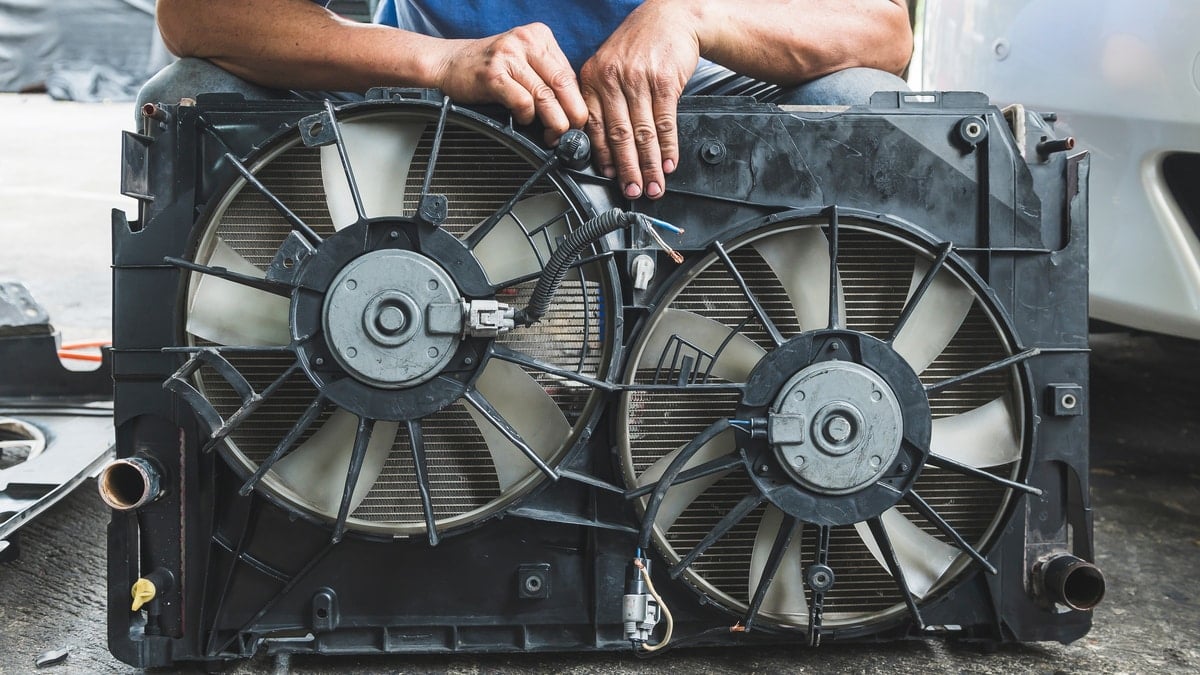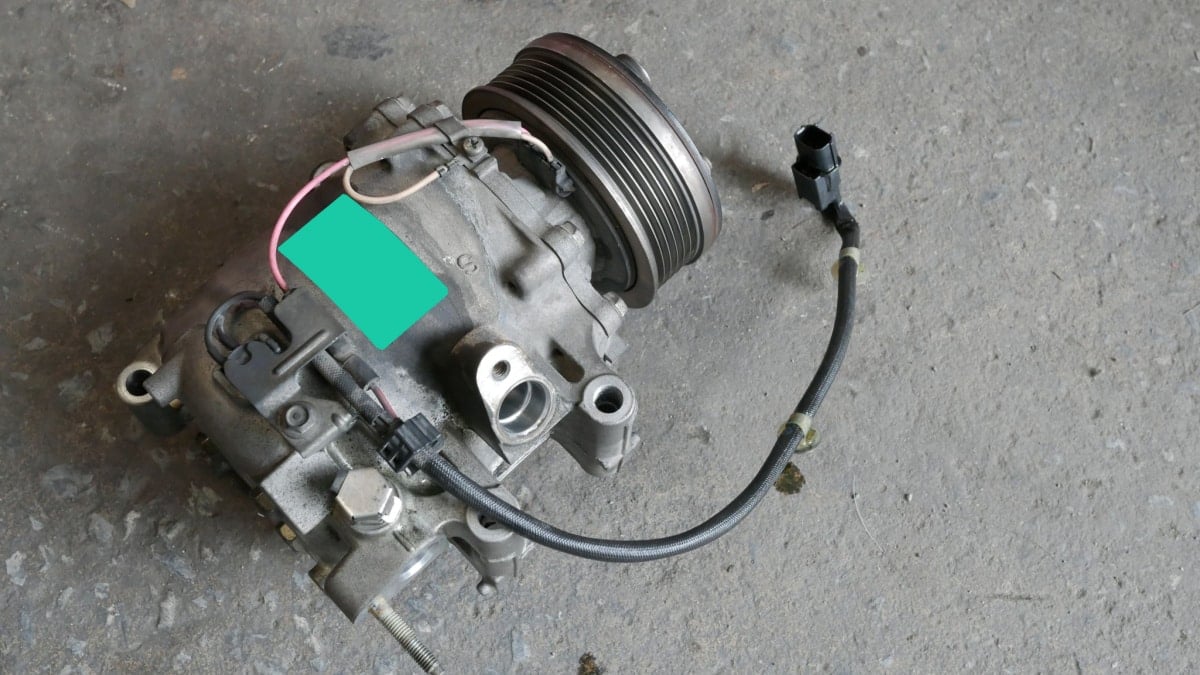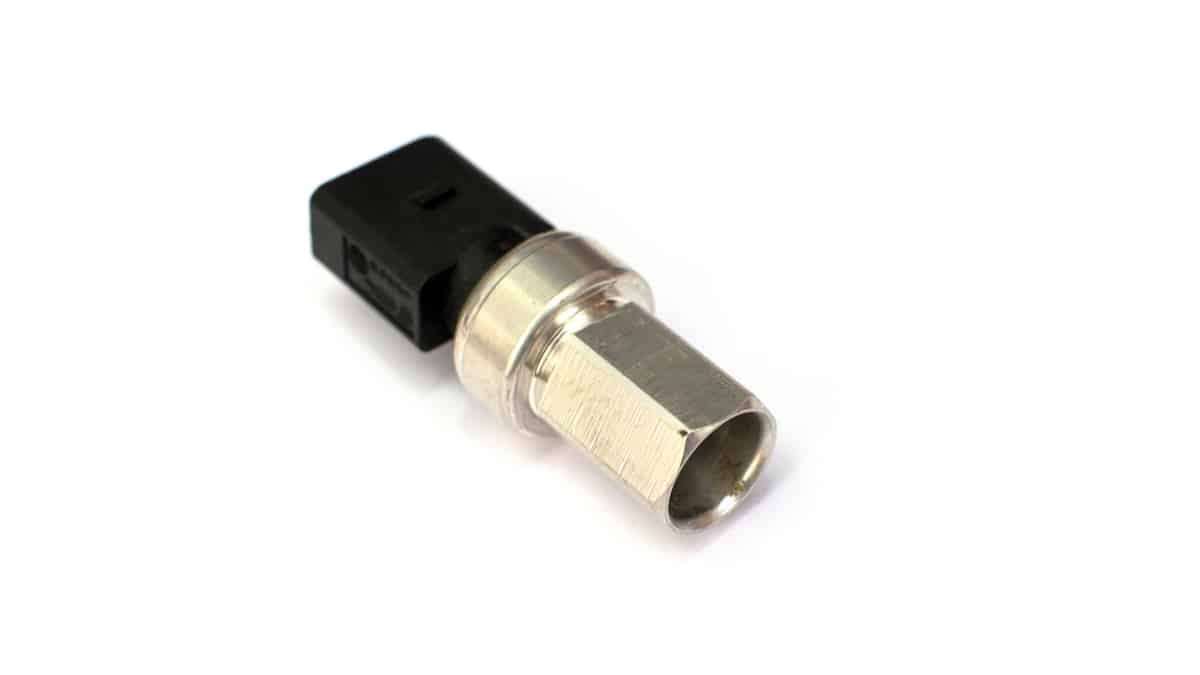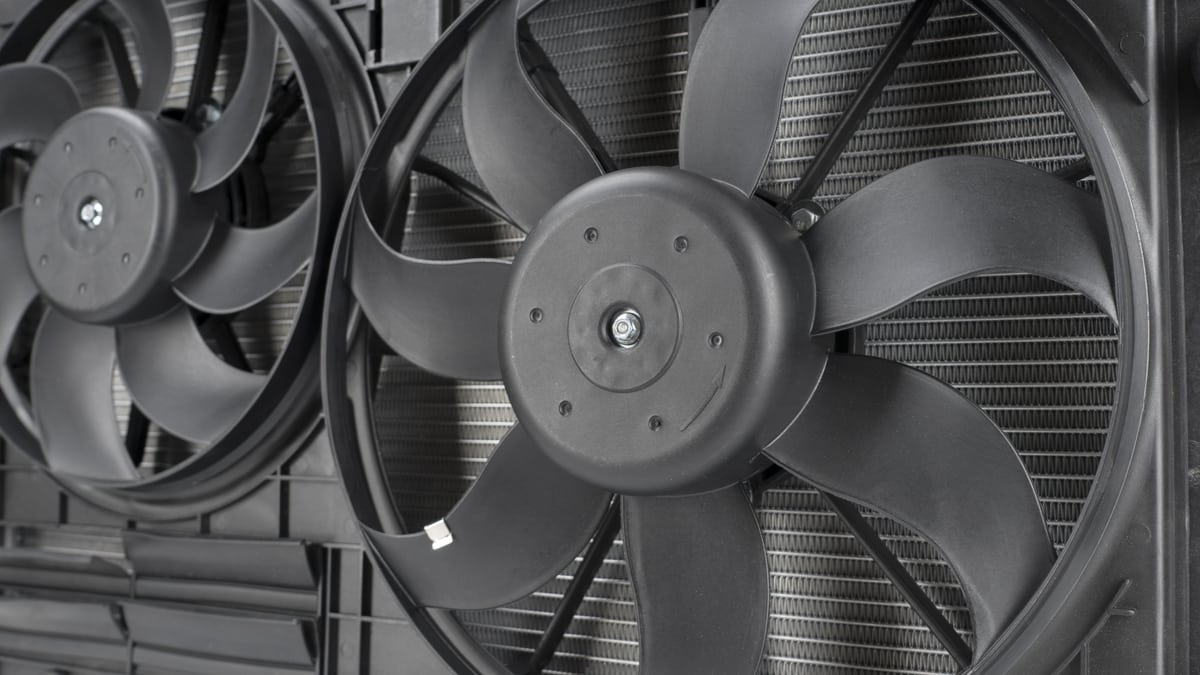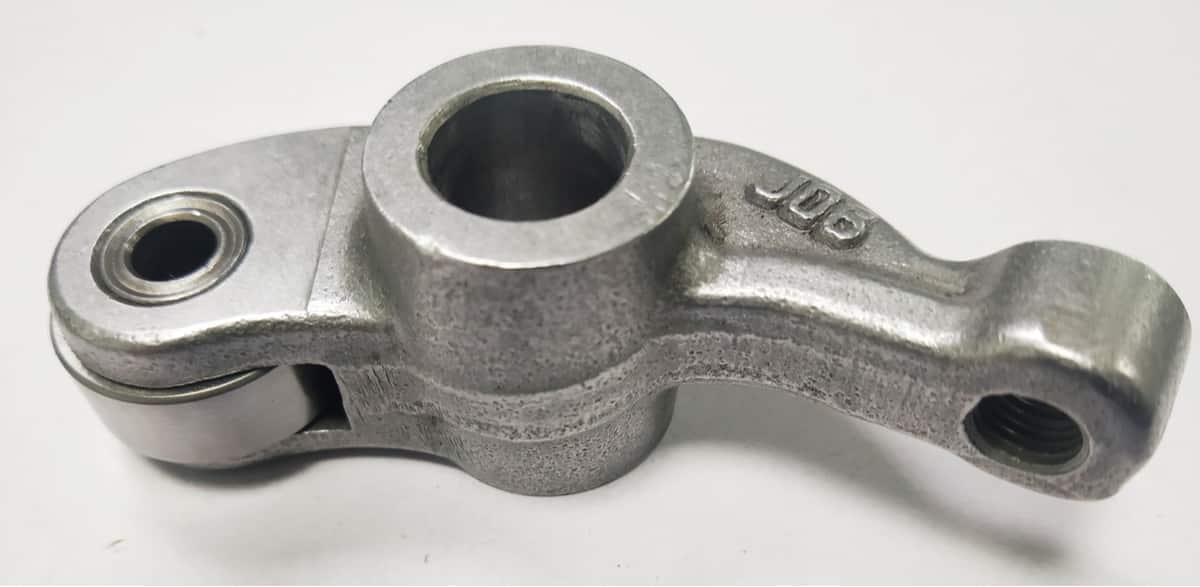When you are driving on a hot summer day, you want to get cold air coming out of the vents. With so many working parts in the automotive air conditioning system, any failure can cause trouble. That’s why it’s important to know the symptoms of a bad car AC condenser and how they differ from other malfunctions.
In this guide, we look at what happens when the car AC condenser fan fails and discuss its purpose. We also show you where it’s located, how to test it and give you an approximate replacement cost.
Symptoms Of A Bad Car AC Condenser Fan
When the AC condenser fan goes bad, you may notice warm air coming from the vents. There could also be irregular temperatures pumping into the cabin or a refrigerant leak. A burning smell may also occur, along with an overheating engine, especially when idling.
Let’s look at these five symptoms that occur most often.
1. Warm Air From Vents

Whenever you deal with an air conditioning fault, your first sign of trouble could be warm air from the vents. This problem could happen slowly over time or all of a sudden, depending on the severity of the issue.
The reason the air gets warm is because the condenser gets too hot to convert the refrigerant back to liquid form. However, this same problem occurs when there isn’t enough refrigerant in the system, which is why you want to walk through a full diagnosis to figure out what’s wrong.
RELATED: 9 Causes Why Your Car AC is Not Blowing Cold Air
2. Irregular Air Temperature From Vents
If the fan is only working intermittently, you could notice that warm air only blows out occasionally. A few minutes later, you may be able to get cold air once again, making the whole situation very confusing.
The other cause for this problem could be a loose connection, wire or short. For that reason, you may be looking at an electrical system issue instead. We touch more on this when outlining how to diagnose the problem.
3. Refrigerant Leak
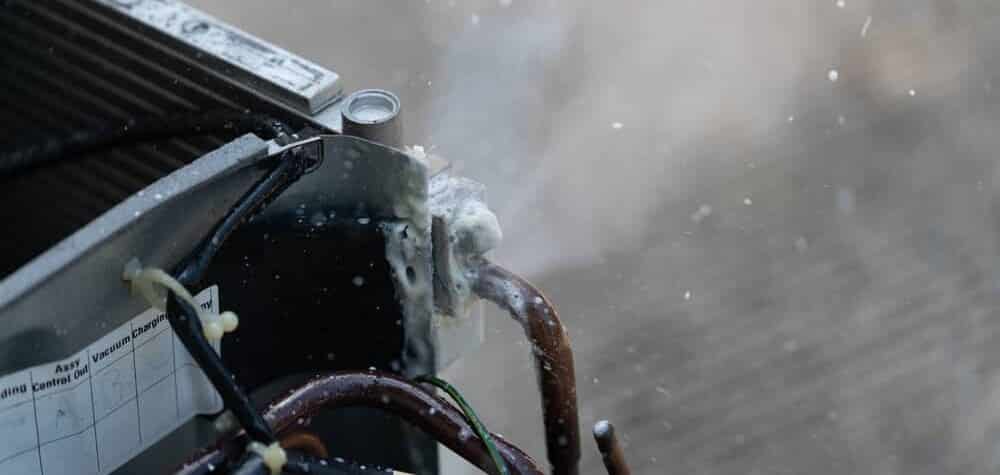
The AC condenser holds pressurized refrigerant. When the fan stops cooling the condenser down, the heat and pressure start to build up.
The result is usually some sort of damage to the condenser, which leads to a leak. However, a leak can be caused by any damage to the lines or other AC system components.
4. Burning Smell

What you never want to smell when you are driving is burning. This odor can indicate a multitude of problems, including issues with the condenser fan.
As the condenser starts to overheat, the entire AC system suffers. As the parts become hot enough you may begin smelling them. The hotter the components get, the more likely there will be damage. That’s why you should stop driving and investigate the issue at the first sign of something wrong.
5. Car Overheating at Idle
When the AC system struggles to run, it can put a strain on the entire vehicle. When the engine has to work harder, it can start to overheat, especially when the car is idling and there’s no airflow to cool down the motor.
The overheating situation may resolve itself once you get moving again, but you should still have the issue looked at. Allowing your engine to overheat only leads to serious motor damage and costly repair bills.
What’s The Function Of An AC Condenser Fan?
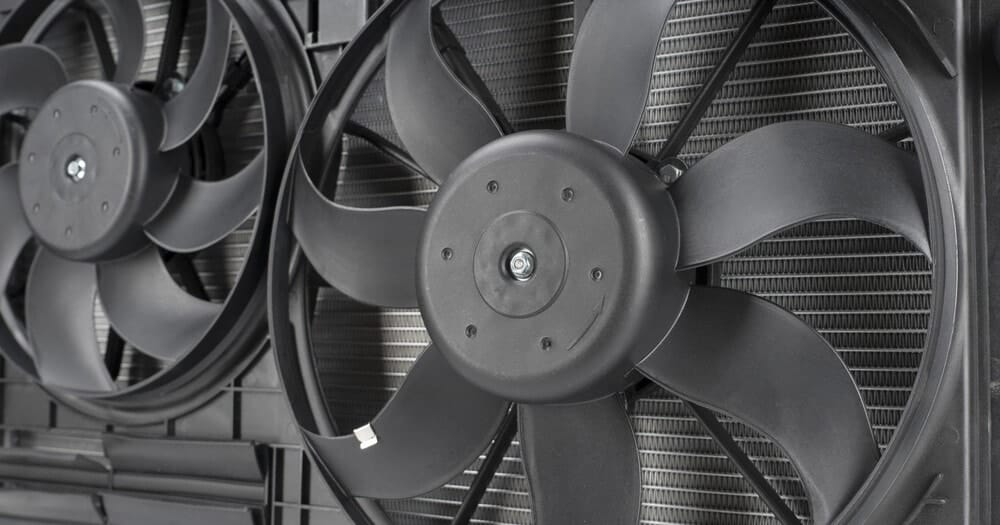
For the air conditioning system to work as intended, heat must be exchanged into cooler air. To make this happen, refrigerant is converted from liquid form into a gas. In the closed loop, it also goes back to liquid from gas and the process continues to repeat.
Understanding every part of the AC system helps you grasp what the fan is responsible for. The AC compressor is powered by the crankshaft. Its job is to pressurize the refrigerant. This is where the AC turns to a high-pressure state from its previous low-pressure state.
This high-pressure refrigerant now moves into the condenser. Think of the condenser as a smaller radiator. Heat is taken out of the refrigerant because of the airflow provided by the fan. After the heat is removed, the gas condenses and becomes a liquid once again.
Without the fan, it would be much harder to remove this heat from the refrigerant. The pressure wouldn’t be removed, so the gas would attempt to move through the system, even though it should be a liquid at this point. Because the gas won’t be able to get through the drier/accumulator, plus the orifice tubes or expansion valve, the pressure will be too high.
Where Is The AC Condenser Fan Located?
You can find the AC condenser fan under the hood of your car. It should be located closer to the front because it’s going to pull air in from outside. In some vehicles, you will find two fans. One will be for the radiator and the other is used by the condenser. However, there could also be one fan used by both.
For that reason, you want to reference the diagram found in your service manual. You should also find good directions for troubleshooting the fan, or you can continue with our suggestions.
How Do You Test An AC Condenser Fan?
When the air conditioning system is running, the fan on the condenser should also be working. If it’s not, there could be a problem, but it doesn’t automatically mean you need to replace the fan. Instead, you want to rule out other issues, such as a wiring problem. Here are some steps to consider.
- Check the automotive fuses. If the fuse has blown, the condenser fan may not be able to run. You can find the fuse diagram in the service manual or on the cover. Pull the one that runs the fan and replace it with a new one if it has blown.
- Visually inspect the wiring and connectors. Look for any sign of damage and replace anything that looks worn.
- Look for obstructions. Because the fan is located at the front of the vehicle, debris could have gotten lodged inside. If you see dirt or grime, try to clean off the fan and see if it works again.
- With a multimeter, you can check for a signal to the fan. If power is getting to the fan, but it’s not running, it’s time to replace it.
If any of these steps are beyond your expertise, or you need help with the repairs, reach out to a professional in your area. As mechanics, we’ve seen a lot of people attempt AC repairs only to make the problem worse. For that reason, it’s always best to err on the side of caution if you aren’t sure.
How Much Does It Cost To Replace An AC Condenser Fan?
On average, expect to spend $300 to $475 for AC condenser fan replacement. Parts might be $225 to $350, while the labor would add another $75 to $175, depending on how simple it is to install.
It’s difficult to put an exact estimate on the cost of a new AC condenser fan. First, you must consider the make and model of your vehicle, as some luxury cars have much higher-priced parts. Additionally, there’s the cost of labor to consider. Mechanic labor rates vary based on where you live. If you can do the job yourself, you could save a good chunk of change.
Some people want to try to repair the condenser fan, but that doesn’t make a lot of sense. The condenser cooling fan is sold as a complete unit. It comes with a motor, blades and housing. You may as well replace the entire assembly, considering the cost.
However, it’s important to make sure you have the correct diagnosis. If you mistake the problem for a bad condenser fan and there’s something else wrong, you will have wasted time and money. You should always check to make sure the air isn’t blowing warm because of a refrigerant leak or other failed component.
Can I drive my car without a condenser fan?
You could drive without the condenser fan working, but it’s not always advisable. First of all, the cabin is going to get warm, especially if you are traveling in the winter. You also won’t be able to use the defrost setting, which may be required for visibility. Furthermore, if the engine overheats, you have bigger problems on your hands.
Does the car AC condenser fan always run?
Yes, when you turn on the car AC, the condenser fan should be running. It’s needed to cool down the hot refrigerant so it can be liquefied. If it can’t cool down, you won’t get cold air out of the vents and you may start to smell something burning. You want to have the AC looked at right away.
What does a bad condenser fan sound like?
After the condenser fan fails completely, you won’t hear any noise because it won’t be running. However, if you catch it while it’s starting to go bad, you may hear a buzzing sound. The same buzzing sound can be heard if there’s an electrical short that’s interfering with normal operation.
When should a car condenser fan turn on?
The AC condenser fan should always be on when the air conditioning is running. After you turn on the air conditioning, the condenser fan should turn on shortly afterward. It’s needed to cool down the hot refrigerant so it turns back into a liquid. If it doesn’t turn from a gas to a liquid, it won’t be able to freely flow through the system.
What is the life expectancy of a condenser fan?
The condenser fan endures a lot of abuse, so it’s not usually going to last forever. You may even need to put on a few of them in the entire lifetime of the car, depending on how many miles you rack up. However, it’s not usual for the condenser fan to fail before hitting the 100,000-mile mark.
If you’ve been struggling to get cold air conditioning while you are driving, it might be time to take a look at the condenser fan. While there are many parts that can cause the same problems, this one is relatively easy to diagnose because the fan should run whenever the AC is turned on.
If you don’t see it running, it’s time to dig in deeper and troubleshoot the system. Visually inspect all of the components, including the fuse, electrical wiring and connectors, to see if you can find the problem. Once you get a new fan installed, it won’t be long before you are enjoying that nice cold air once again.
Categories: Air condition, Troubleshooting
